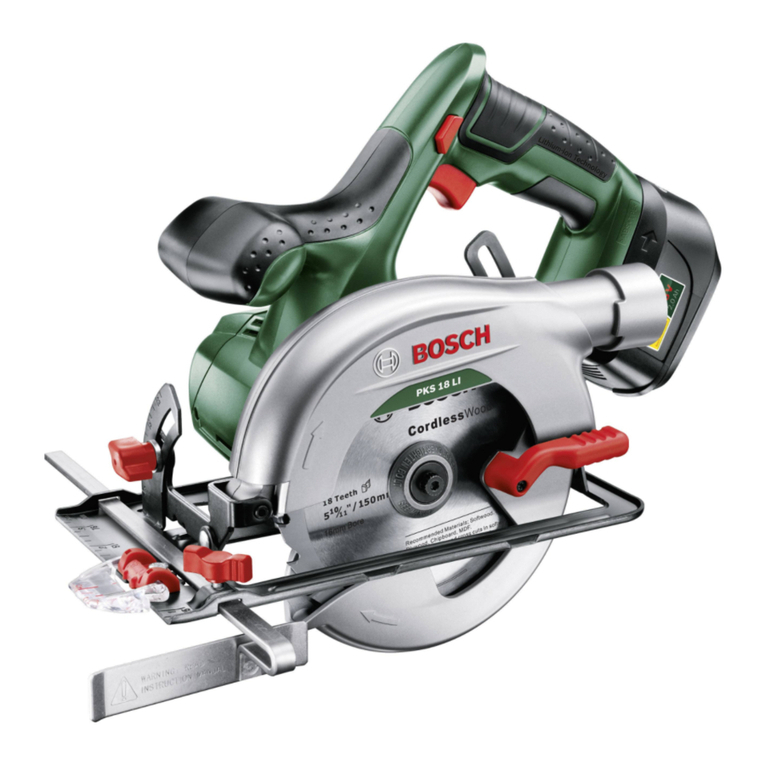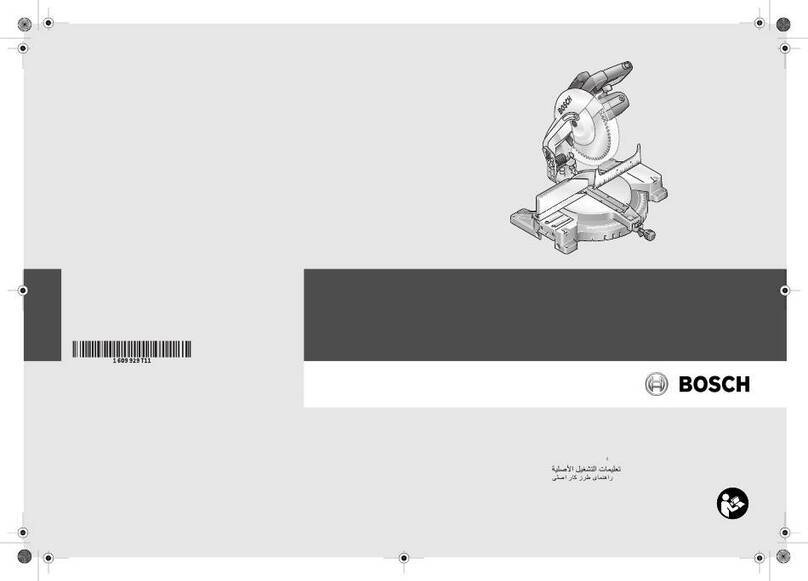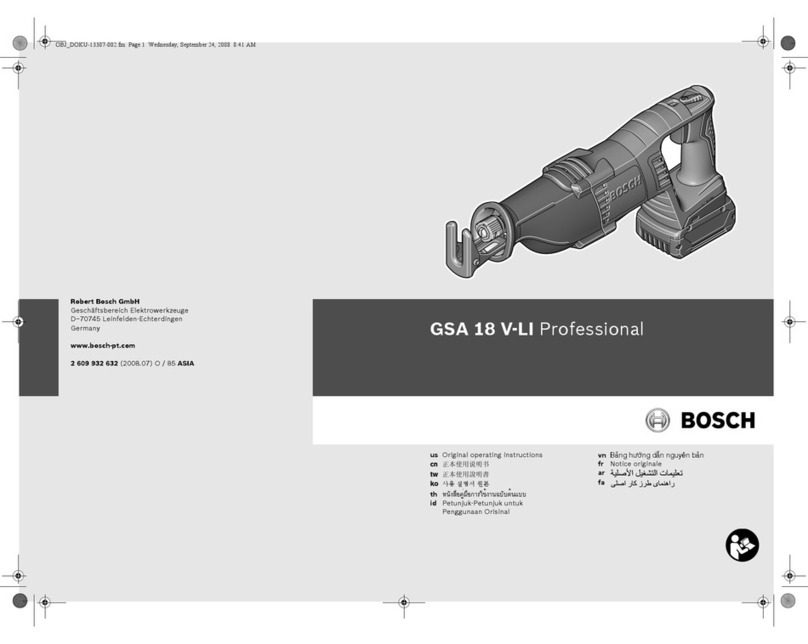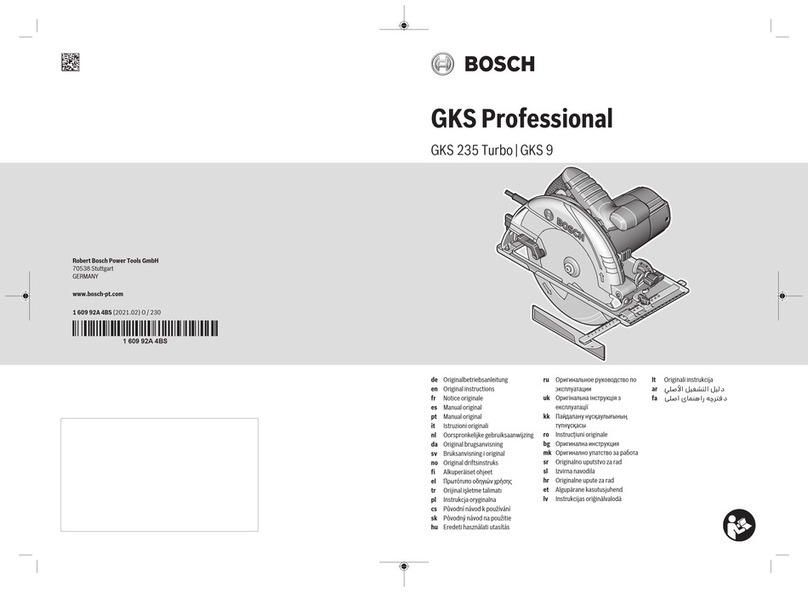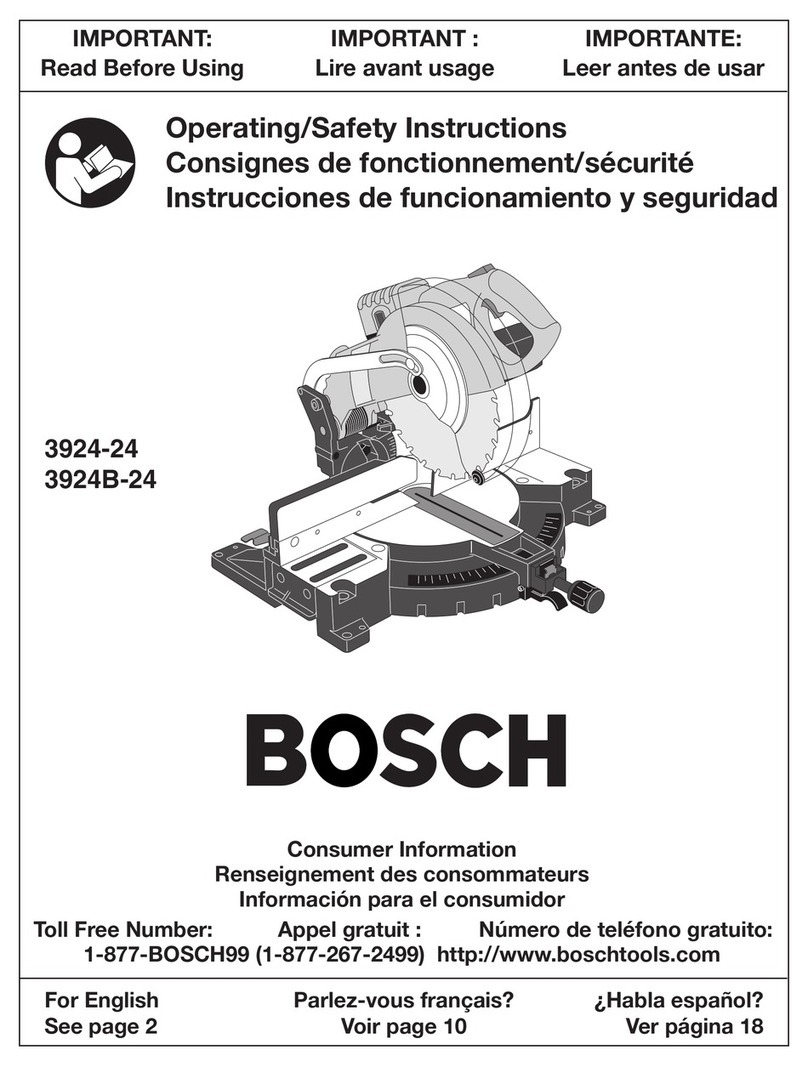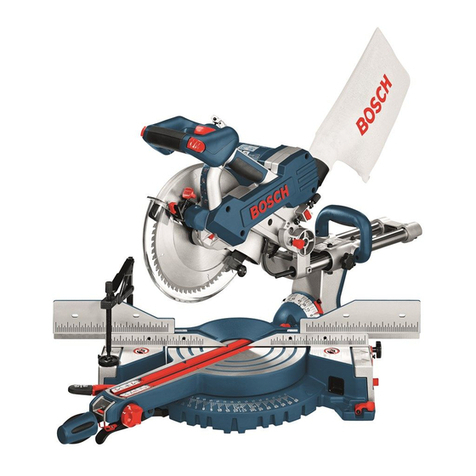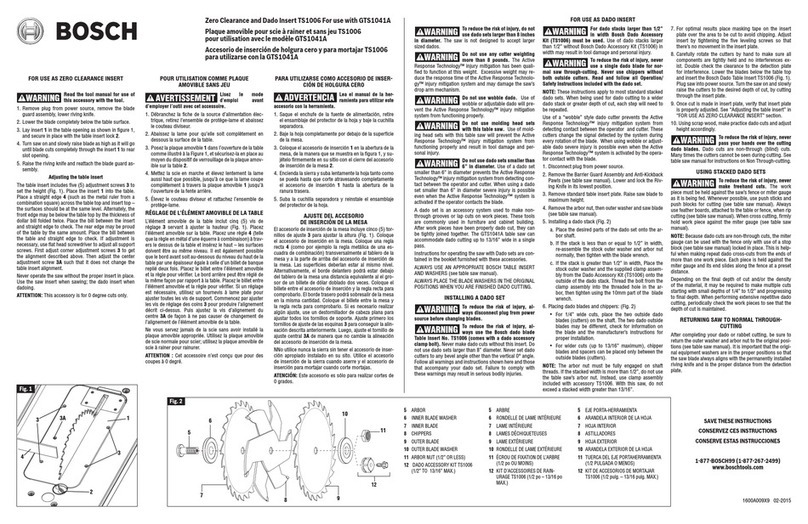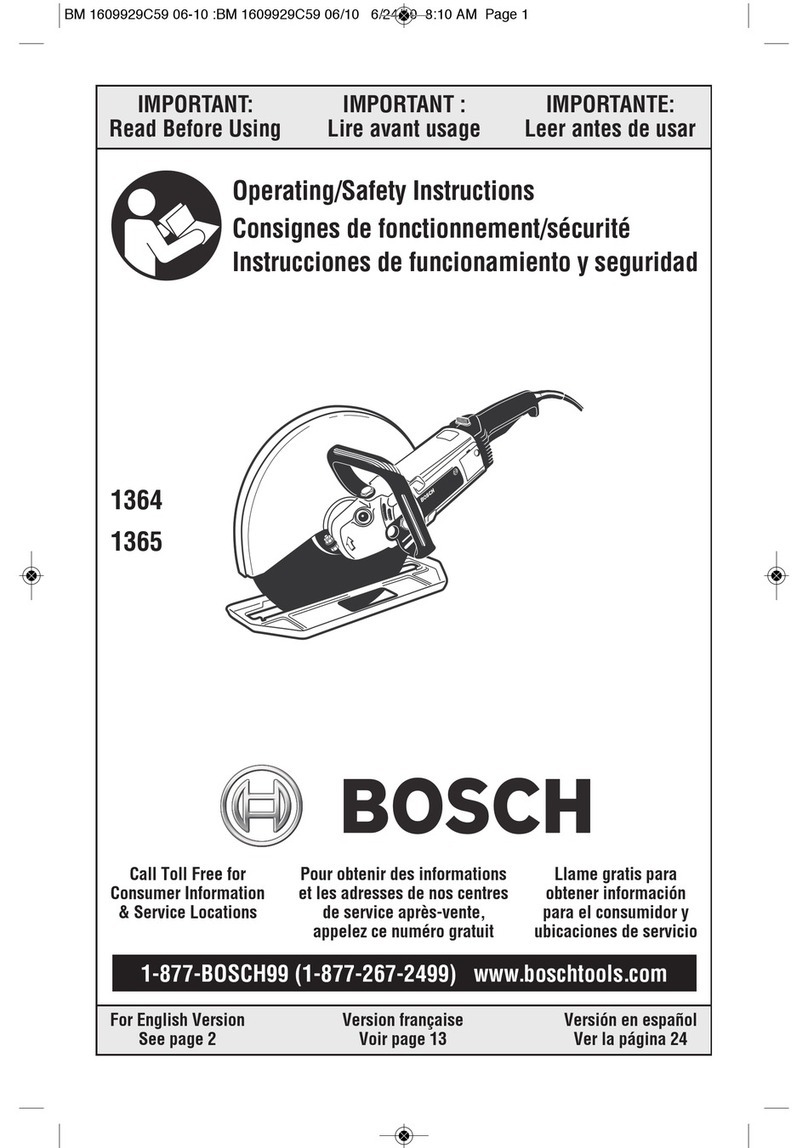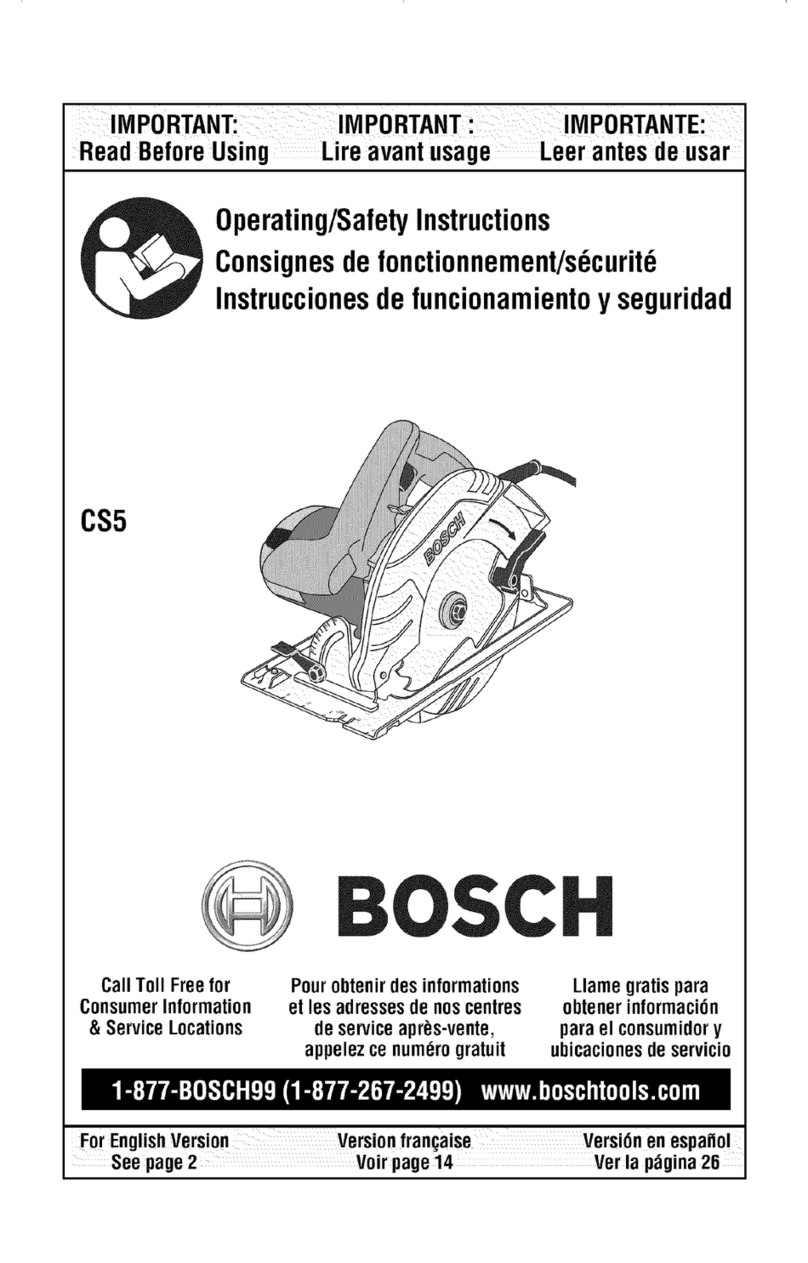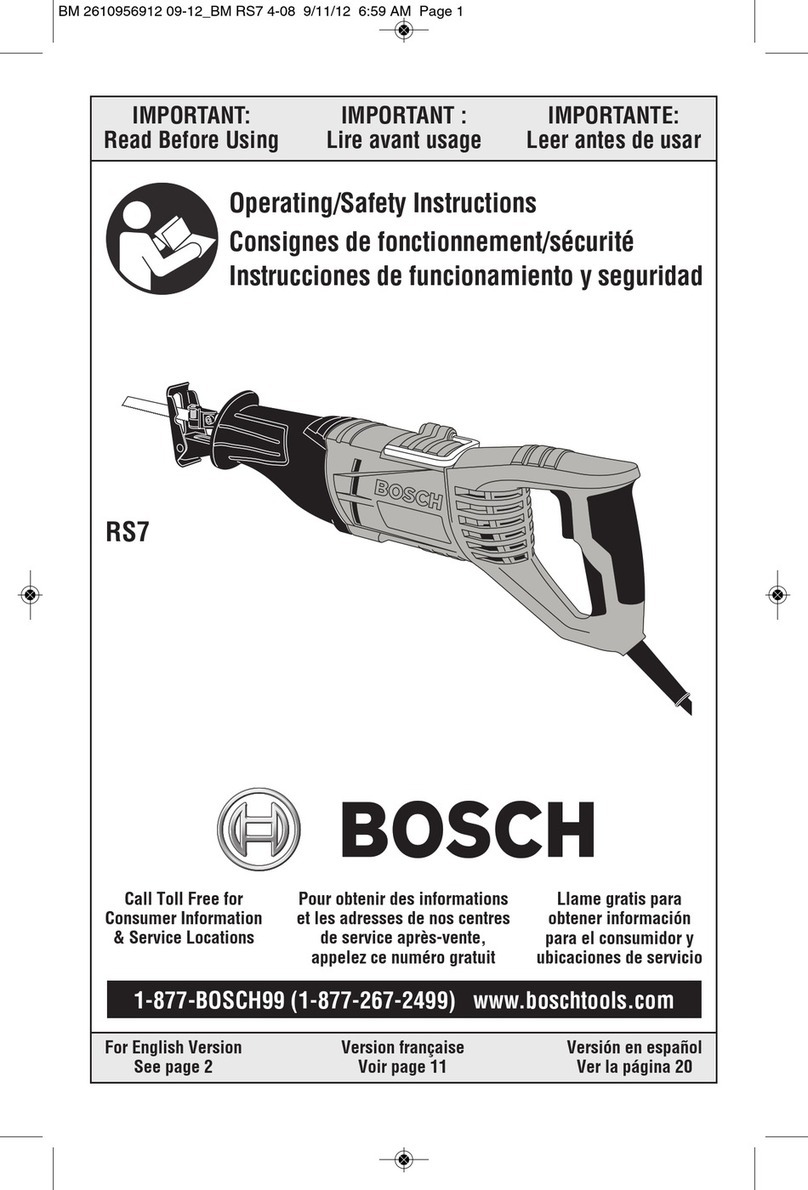
4
Additional Safety Warnings
PROTECTION:
Eyes, hands, face, ears and body.
TO AVOID BEING PULLED INTO THE SPIN-
NING TOOL, DO NOT WEAR:
• LOOSEFITTINGGLOVES
• LOOSECLOTHING
• NECKTIE,JEWELRY
DO:
• TIEBACKLONGHAIR
• ROLLLONGSLEEVESABOVEELBOWS
a. If any part of your saw is missing, malfunction-
ing, has been damaged or broken, such as the
motor switch, or other operating control, a safe-
ty device or the power cord cease operating
immediately until the particular part is properly
repaired or replaced.
b. The injury mitigation system requires contact
with the operator’s body in order to react. This
will cause some injury to be sustained if the
contact occurs. The best defense against in-
jury remains the knowledge of how to safely
operate the saw contained within this manual
and the operator’s attention to the cutting op-
eration underway.
c. Be aware of the status indicator lights. Do not
use the tool unless you understand it is safe to
use.
d. Wear safety goggles and a face shield if op-
eration is dusty. Wear ear plugs or muffs dur-
ing extended periods of operation. Small loose
pieces of wood or other objects that contact
the rear of the rotating blade can be thrown
back at the operator at excessive speed. This
can usually be avoided by keeping the guard
and riving knife in place for all “THROUGH-
CUTTING” operations (cutting entirely through
the work) AND by removing all loose pieces
from the table with a long stick of wood IMME-
DIATELY after they are cutoff.
e. Use extra caution when the guard assembly is
removed for cutting, dadoing or rabbeting —
replace the guard as soon as that operation is
completed.
f. NEVER turn the saw “ON” before clearing the
table of all tools, wood scraps, etc., except the
work piece and related feed or support devices
for the operation planned.
g.NEVER place your face or body in line with the
cutting tool.
• NEVER place your fingers and hands in the
path of the saw blade or other cutting tool.
Keep your fingers and hands at least 4 inches
away from the blade or other cutting tool.
• NEVER reach in back of the cutting tool with
either hand to hold down or support the work
piece, remove wood scraps, or for any other
reason. Avoid awkward operations and hand
positions where sudden slip could cause fin-
gers or hand to move into a saw blade or other
cutting tool. Even with the injury mitigation sys-
tem engaged, these actions can lead to your
hand or arms being forced into the blade at
high speeds. A significant injury is likely under
these conditions.
• DONOTperformanyoperation“FREEHAND”
— always use either the rip fence or the miter
gauge to position and guide the work.
• NEVERusetheripfencewhencrosscuttingor
the miter gauge when ripping. DO NOT use the
rip fence as a length stop.
• NEVERholdontoortouchthe“freeend”ofthe
work piece or a “free piece” that is cut off, while
power is “ON” and/or the saw blade is rotating.
• Shut“OFF”thesawanddisconnectthepower
cord when removing the table insert, chang-
ing the cutting tool, removing or replacing the
blade guard, resetting the safety system or
making adjustments.
• Provideadequatesupporttotherearandsides
of the saw table for wider or long work pieces.
• Plasticandcomposition(likehardboard)mate-
rials may be cut on your saw. However, since
these are usually quite hard and slippery, the
anti-kickback pawls may not stop a kick back.
Therefore, be especially attentive to following
proper set-up and cutting procedures for rip-
ping. Do not stand, or permit anyone else to
stand, in line with a potential kickback.
h. If you stall or jam the saw blade in the work
piece, turn saw “OFF”, remove the work piece
from the saw blade, and check to see if the saw
SAVE THESE INSTRUCTIONS
READ ALL INSTRUCTIONS. Failure to follow the safety rules listed below and
other basic safety precautions may result in serious personal injury.
1600A009XC 09-15.indb 4 9/14/15 1:51 PM

